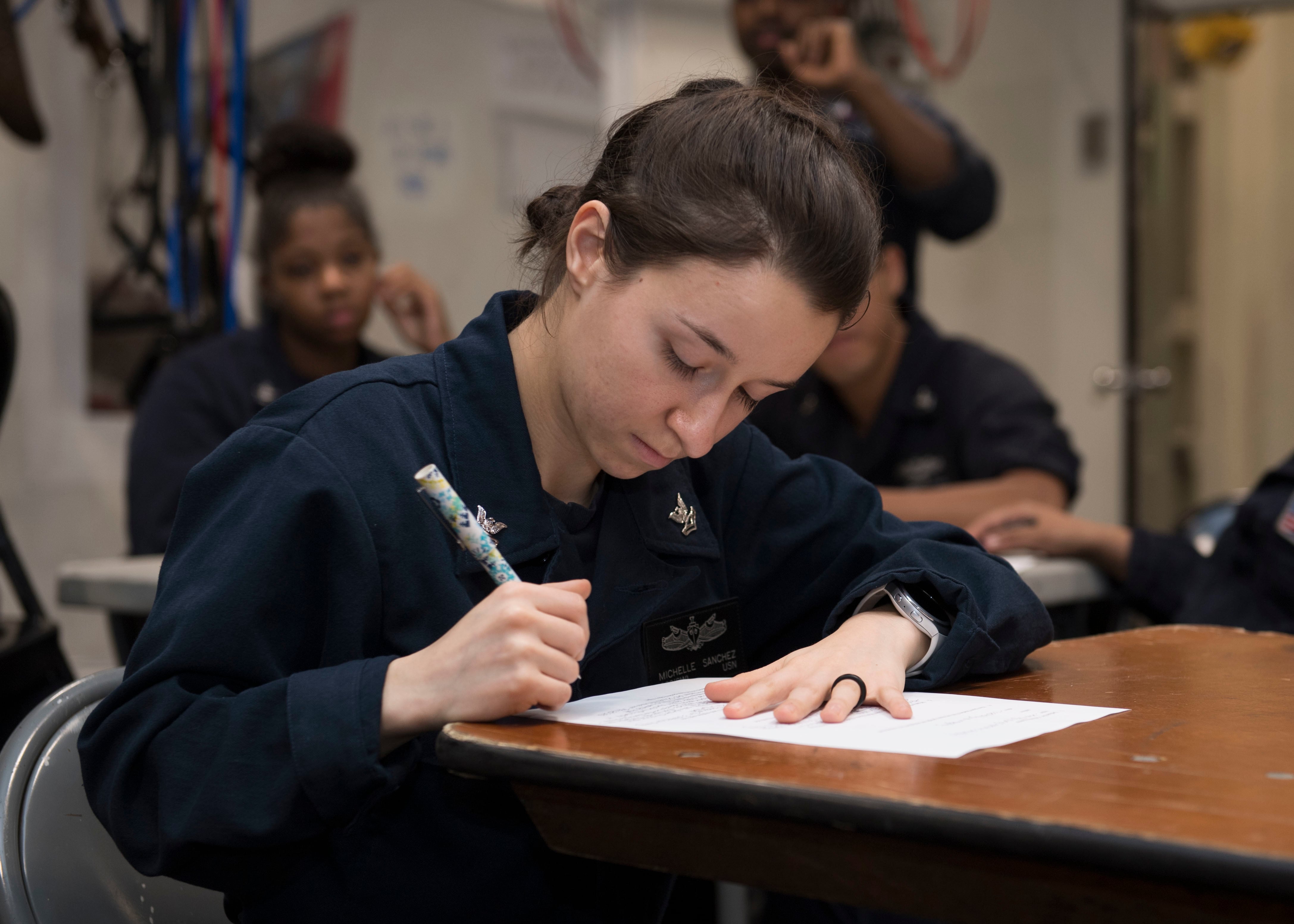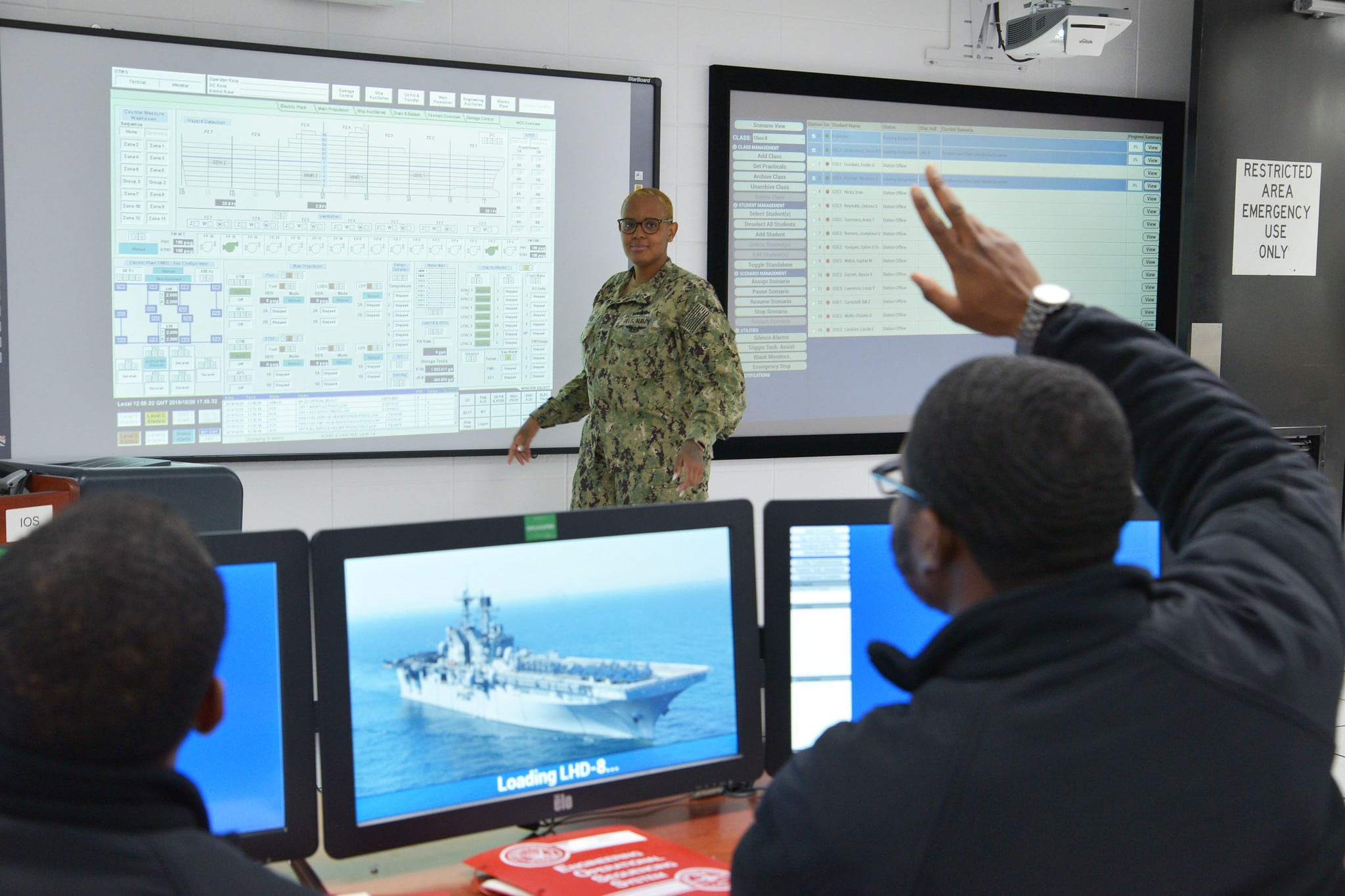After several years, the U.S. Naval Community College reached initial operating capability in the fall of 2023 following several rounds of pilot programs, offering thousands of sailors, Marines and Coast Guardsmen the opportunity to earn an accredited, two-year associate degree.
Efforts to stand up the U.S. Naval Community college, known as USNCC for short, kicked off in 2019 when the Navy announced plans to launch an “Education for Seapower” campaign aimed at bolstering the service’s enlisted educational offerings.
USNCC now provides more than 2,600 service members access to education that pertains to their military jobs, while paving the way for them to receive further credentials and degrees, Dr. Randi Cosentino, president of the USNCC, told Navy Times.
“With [initial operating capability], it basically means we have the systems, the infrastructure, the beginnings of our program plans and the model that’s been proven that we now can grow on and invest in in order to ultimately get to [full operating capability],” Cosentino said.
Currently, students may receive an associate’s degree in more than five fields — including cybersecurity and nuclear engineering — through partner institutions like Arizona State University, Alexandria Technical and Community College, and University of Maryland Global Campus.
RELATED

The programs are delivered exclusively online, meaning that even those aboard ships have access to nearly all courses, Cosentino said.
“Our service members are participating in these programs while maintaining their full op-tempo,” Cosentino said. “And that means that some are taking it even while out and deployed.”
Efforts continue to make the courses and programs more accessible in low-bandwidth environments, such as deployed ships, she added.
After completing their associate degree through USNCC, service members can transfer to a four-year institution to receive their bachelor’s degree using their tuition assistance or GI Bill credits, Cosentino said.
“Every single one of our programs has at least one high-quality transfer pathway that is a guaranteed, two-plus-two, pathway,” Cosentino said. “That means you take your full associate’s degree, no loss of credit, and you get to translate that into a relevant four-year degree.”
The community college first originated from former Secretary of the Navy Richard Spencer’s “Education for Seapower” campaign in 2019 as part of efforts to improve the Navy’s intellectual advancement.
In January 2021, USNCC kicked off its first pilot program, providing roughly 600 students the opportunity to study the nuclear field, cyber security, data analytics, English, math, and naval ethics.
Then-Secretary of the Navy Kenneth Braithwaite said at the time that it is “imperative we have a more educated enlisted force, grounded in the understanding of current events, allowing them to add context to the actions they may be ordered to do.”
In an interview with Navy Times, USNCC Command Master Chief Jordan Rosado urged service members to take advantage of the program and start furthering their education as soon as possible.
RELATED

An early start allows service members more flexibility regarding how to use their tuition assistance, or GI Bill, to continue their education, he said.
Once reaching full operating capability, currently slated for 2028, USNCC plans to dramatically increase its student body and offer associate degrees in 15 to 25 different areas.
“I’m hoping to, in the near years, expand to 25,000 students enrolled in the U.S. Naval Community College,” Master Chief Petty Officer of the Navy James Honea told Navy Times in an exclusive interview at his Pentagon office in September. “And I would like to continue to expand on that so that it becomes more and more relevant and impactful to the sailors across our Navy.”
Key steps left to reaching full operating capability include hiring more staff to accommodate more students and receiving accreditation so students receive their degree from USNCC, instead of from partner institutions.
“The accreditation process in and of itself is a three-to-five-year process,” Cosentino said. “Our goal is to make sure that we are fully accredited before we reach [full operating capability]…We feel highly confident that we’re putting in place all of the programs or policies, outcomes, the assessments that we’re going to need to hopefully achieve that.”




